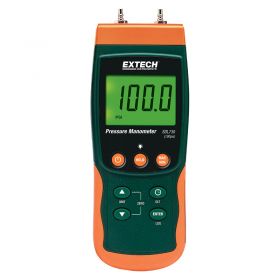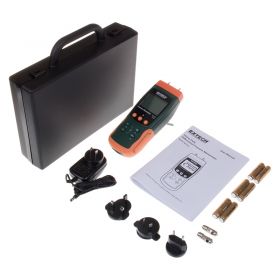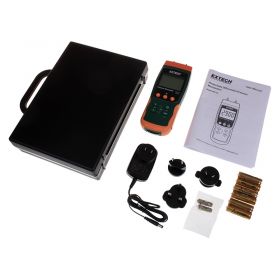Manometers & Pressure Meters
-

 Free UK DeliveryExtech SDL730 High-Range Differential Pressure Datalogging Manometer£310.80 £259.00
Free UK DeliveryExtech SDL730 High-Range Differential Pressure Datalogging Manometer£310.80 £259.00- Measure and record high levels of pressure to 7000mbar
- 10 selectable pressure measurement units
- SD card stores findings in Excel format for easy transfer to PC
259 Reward PointsPrice Match GuaranteeSDL730 -

 Free UK DeliveryExtech SDL720 Differential Pressure Meter/Datalogger (2000mbar)£339.60 £283.00
Free UK DeliveryExtech SDL720 Differential Pressure Meter/Datalogger (2000mbar)£339.60 £283.00- Measure pressure in 10 selectable units
- Range to 2000mbar (or equivalent)
- Datalogging - stores data on SD card with date/time stamps
283 Reward PointsPrice Match GuaranteeSDL720 -

 Free UK DeliveryExtech SDL710 Low Range Datalogging Differential Pressure Meter£341.88 £284.90
Free UK DeliveryExtech SDL710 Low Range Datalogging Differential Pressure Meter£341.88 £284.90- Measure/record low levels of pressure
- 10 selectable pressure measurement units
- Stores data with date/time stamp in Excel format
284 Reward PointsPrice Match GuaranteeSDL710
About Manometers & Pressure Meters
At Tester, we stock a wide range of differential manometers and U gauges for measuring the difference in pressure between two atmospheric sources. The most typical use for this is to measure the pressure of gas and air condition systems at close to atmospheric pressures. A correctly calibrated tester can also be used to troubleshoot a whole range of different problems from gas leaks to inconsistent pressures.
Manometers work on typically having a U-shaped tube filled with either mercury or water. The reason that mercury is often used over the more readily available and non-toxic water is that the increased density of mercury allows for a much smaller column to be required and therefore a much smaller tester can be produced.
To operate a manometer both sides of the column are attached to a pressure-producing source, such as a gas outlet. In response to the difference in pressure, the liquid will travel up the column a distance that can be measured to calculate the exact difference in pressure.
Simple U-shaped manometers are often no more complicated than this, with an engineer having to calculate the exact differential pressure between the sources. Most electrical manometers do most of the hard work for you by providing highly accurate readings of the exact difference as well as offering additional features any HVAC engineer may need.
Before commencing work it is very important to make sure that your manometer is suitable for the task at hand. There is a very wide range of different manometers that specialise in testing between different pressure ranges insuring the most accurate results possible.


